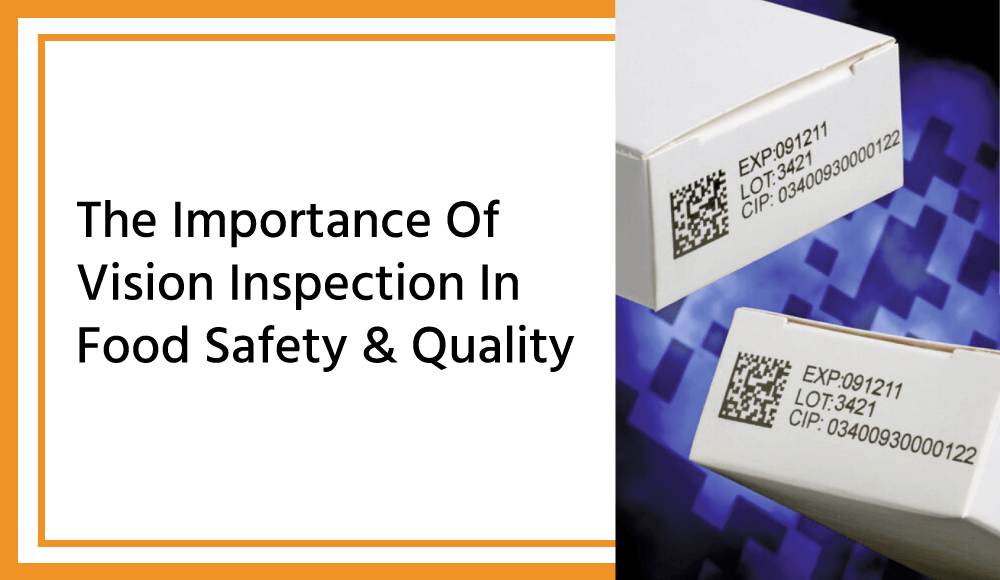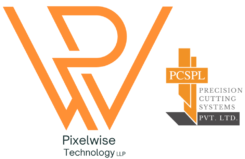
- Pixelwise Technology
- Apr 29, 2023
- Industry, Production
Vision inspection, also known as machine vision technology, is an automated inspection system that conducts inspection processes during production and packaging stages in various manufacturing industries.
Visual inspection systems play a vital role in enhancing food safety by detecting contaminants and verifying the quality of the food items being packed. In addition to safety, vision inspection also ensures quality by doing the following: accurate labelling, scrutinising packaging and monitoring the production processes in real time.
These processes put together prevent defective products from reaching customers, in turn reducing foodborne diseases and protecting the brand image by complying with the safety standards.
Enhance food safety and quality with cutting-edge vision inspection. Get a quote!
The Benefits of Automated Vision Inspection Systems in Food Manufacturing & Production
Automated vision inspection systems play a crucial role in the food manufacturing industry. Listed below are few of the many benefits it offers in food manufacturing and production:
1. Reduces Cost
The automated vision inspection system captures images and videos throughout the process, which enables the detection of defects at an earlier stage of manufacturing, significantly reducing the material that is wasted. This improves customer satisfaction and lowers additional shipping costs while optimising the process and preventing returns of defective items.
2. Data Collection And Analysis
During the inspection process, vision inspection systems can create huge volumes of data, which can then be collected, analysed, and used to improve the inspection process. You can also use the data to perform trend analysis and predictive maintenance. This data driven strategy, may help to enhance overall operational efficiency by optimising production processes and identifying the areas that are in need of improvement.
3. Enhances Safety & Reputation
Since machine vision minimises human participation in the hazardous manufacturing processes that pose risk to the employees, these vision systems help create a safer work environment overall. Machine vision systems also have substantial pre-programming and machine learning capabilities, providing exceptional precision in the inspection of food and beverage products. This ensures they meet the food safety automation standards while enhancing quality assurance efficiency. Since the company always sends out high-quality products, its reputation grows, which leads to improved revenue.
4. Maintains Quality Of Product
Automatic vision inspection systems are designed to enhance the quality attributes of food products, such as size, shape, colour, texture, and appearance. This provides food quality assurance and ensures that the product always meets the required standard and reduces the number of defects.
5. Real-Time Monitoring And Alerting
Automatic machine vision technology can provide real-time input regarding the quality of products, enabling manufacturers to immediately identify the issue and address it. This allows for timely intervention and corrective action.
How to Choose the Right Vision System for Your Food Processing Needs?
As a business one of your primary goals should include providing high-quality products to your customers, making a vision inspection system a necessity these days. So, it is necessary to consider certain factors while choosing the computer visual inspection system since you also have to take your budgets and other business processes in consideration while making this choice.
Here are a few steps to guide you in the process of choosing the right vision system for your needs:
1. Identify Your Inspection Requirements
First and foremost, evaluate the needs, safety goals, stands, and other inspection requirements that your business might require. This may include a smart camera system for the food processing plant to detect defects, contaminants, irregular shapes, sizes, or colours. It can verify the label and packaging’s integrity; and inspect product quantity levels to ensure they are at the appropriate levels.
2. Estimate The Inspection Time
You should consider the total inspection time while choosing a vision inspection system for food inspection since the time taken can directly affect your food production cycle and the efficiency of the manufacturing process. When the inspection time is too high, it can increase production costs. Whereas if inspection time is too short, it could lead to defects, which is why you have to consider the time taken for your manufacturing processes and factor in it while selecting a machine vision system.
Keep in mind, the total inspection time should also include the time the vision inspection takes for all the processes, such as material handling, image capturing, and data processing time. If you need help in getting an estimate of the inspection time, you can get in touch with Pixelwise Technology LLP, and we can help you understand as well as pick the right vision system for your needs.
3. Evaluate The Environmental Considerations
Visual inspection systems may not function optimally in humid, hot, or dusty food processing facilities. So, it is essential that you choose a system that has been built to endure these conditions, providing the necessary degree of protection against dust and moisture.
4. Consider Integration And Functionality
Choose a system that is not only simple to install but also user-friendly. This is an essential aspect that must not be overlooked in any way. Examine the accessibility of software tools for setup, configuration, and monitoring, as well as the compatibility of those tools with the existing automation and control systems.
5. Check The Accuracy And Reliability Of The System
Evaluating the accuracy and reliability of the inspection system is important since it is necessary for producing reliable and consistent results. Look for a system that has an established track record of accuracy and also takes into consideration issues such as the capacity to manage changes in food product types and size.
6. Buy From An Industry Specialized Partner
Find a reputed provider of quality camera inspection systems for printing and packaging. Buying from an experienced partner is usually better than purchasing from a random partner to save some money. A partner who specialises in your industry will be familiar with the upcoming challenges and offers effective solutions for resolving them.
Examples Of Different Applications Of Vision Systems In The Food Industry
Consumers are growing more health-conscious, which has led to a more competitive and dynamic food industry. Here’s how vision systems can be used in food industry to improve processing efficiency, optimise production, maintain quality, and keep employees safe:
1. Safety Inspection
The cameras are integrated into the machine vision system for automatic defect detection for food production lines, which includes contaminants or unwanted harmful material in the food item. They start identifying the contaminants such as glass, metal, plastic, or other unwanted items, from the beginning of the process up till it’s packed properly with the appropriate seal and labelling, ensuring that only the healthy products reach the end consumer.
2. Monitoring Materials
The machine vision has an ability to monitor the processing of all products from raw materials to the final product which is throughout the process. It provides quality control automation for food industry and also ensures that there is no material lost during the transit and that the quality of the product is consistently matching the mandatory standards.
3. Labelling
Vision systems can verify the accuracy of labels that are placed on food products. This helps to ensure that the appropriate labels are applied to the products and that they contain accurate information such as product name, ingredients and expiry date. This prevents mislabeling, which can cause regulatory compliance and safety issues.
4. Packaging
It examines the packaging of food products to see whether or not there are any flaws or inconsistencies, such as missing or incorrectly printed labels, broken packaging, or wrong barcodes. Using a vision system, ensures that the packaging is untampered, the labels and barcode are printed accurately, and meet regulatory requirements for food packaging and safety.
5. Uniform Containers
Machine vision technology not only evaluates the products for defects, but it also conducts automated visual inspections of foods and beverages packaging to ensure it is proper and undamaged. By scanning the containers, it checks to see that they are all correctly labelled and contain the same quantity of food. If there is even the slightest discrepancy in the packing, it will identify it and eliminate it.
Enhance food safety and quality with cutting-edge vision inspection. Get a quote!
Conclusion
The importance of automated visual inspections in the food industry is pivotal. It can detect contaminants from food items that can posses several health risks not visible to the human eye.
It safeguards consumers against potential health hazards imposed by contaminated or adulterated food products. Installing vision systems ensures that the food products are meeting the mandatory food quality standards by assessing characteristics such as colour, size, shape, and texture of the item. This leads to improved product quality and consumer satisfaction.
Are you interested in learning how vision inspection systems are used across other industries? Refer to our guide: Importance Of Vision Inspection In The Pharmaceutical Industry, which provides an in-depth understanding of machine vision used in the pharmaceutical industry.





